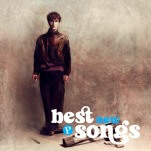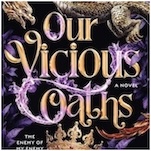Seinabo Sey: The Best of What’s Next
Swedish soul singer Seinabo Sey is only 24 years old and has yet to release her debut LP, but already she appears on a postage stamp in her homeland. She was one of five recording artists—along with First Aid Kit, Robyn, Avicii, and Max Martin—chosen by Sweden’s stamp advisory committee to represent the country’s success as a pop music export.
“If this doesn’t turn out the way I want it to,” Sey says of her music career, “and I have to convince my grandkids that I was a singer once, they’re probably not going to believe me. But I’m going to go, ‘See. I have a stamp. I did something.’”
Last summer, Sey’s debut single, “Younger,” cracked the Top 20 of Sweden’s singles chart, while a remix of the track by Norwegian DJ and producer Kygo held the top spot on Norway’s singles chart for seven weeks. “Younger,” with its seize-the-day message, fuses elements of R&B and electronica, opening with hymnal keyboard notes that give way to Sey’s rousing, beyond-her-years vocal. The song, which she performed with a 60-piece orchestra at the Nobel Peace Prize concert in Oslo last December, is about daring to be yourself while pursuing your dreams.
“I’d like to write songs that make people feel like they’re not alone, and less weird,” Sey says. “’Cause I found myself feeling weird my whole life.”
Sey was born in Stockholm to a Swedish mother and Gambian father, the renowned West African musician, Maudo Sey. She spent her early childhood in Gambia, where she listened to reggae and Sufi music with her family. Her mother’s side is from Stockholm, but she was raised in Halmstad—her grandmother had a house there—after moving back to Sweden. As a youngster, Sey never considered that her skin color might be the reason why kids didn’t want to play with her. Only looking back does she realize that she was dealing with ignorance and prejudice.
“For Swedish people, it’s still kind of a shock that there’s even such a thing as racism,” Sey says. “We’re not vocal about it at all.”
In her teens, she found inspiration in the music of Lauryn Hill, Alicia Keys, and Destiny’s Child. At 16, she abandoned an academic path to becoming a lawyer and moved to Stockholm to study music, partly because her father had relocated there.
“I was not the best student,” Sey confesses. “I didn’t even get a good grade in singing. I’d come to the concerts and perform well and be very good at that, but I never went to school.”
She also had trouble holding onto a variety of jobs, such as telemarketing, looking after kids at a gym, and working in a coffeehouse, where instead she’d sit and write song lyrics.
“I’ve been shockingly bad at my jobs,” Sey says. “Most people, after a while, you just get the hang of stuff. I do not know how to make a latte, and I worked in a coffee shop for a year.”
-

-

-

-

-

-

-

-

-

-

-

-

-

-

-

-

-

-

-

-

-

-

-

-

-

-

-

-

-

-

-

-

-

-

-

-

-

-

-

-








































